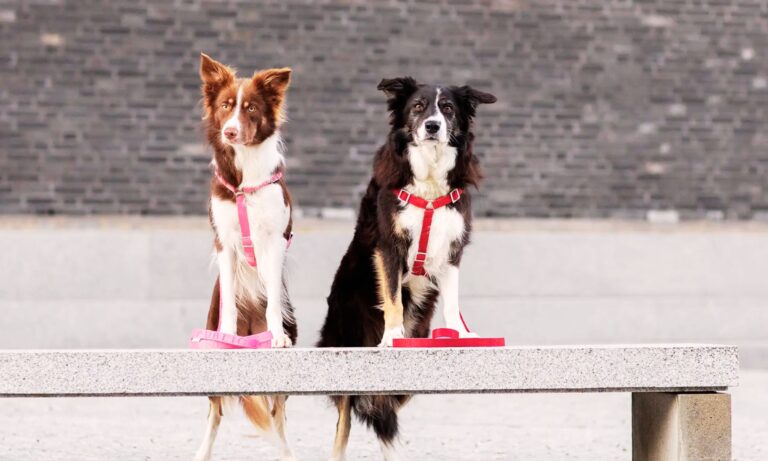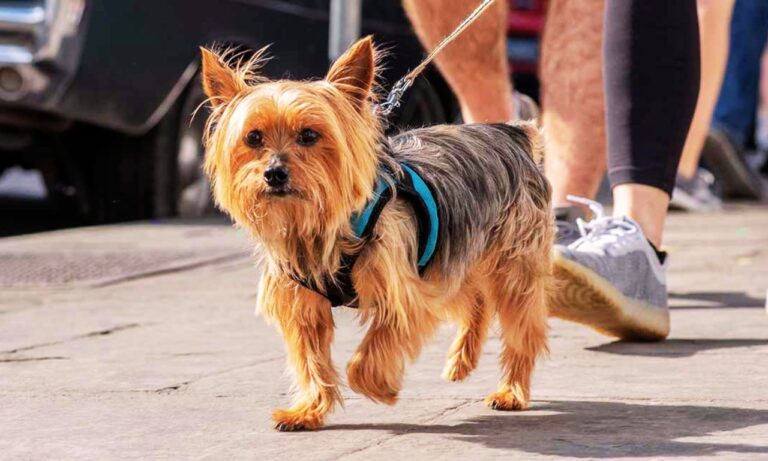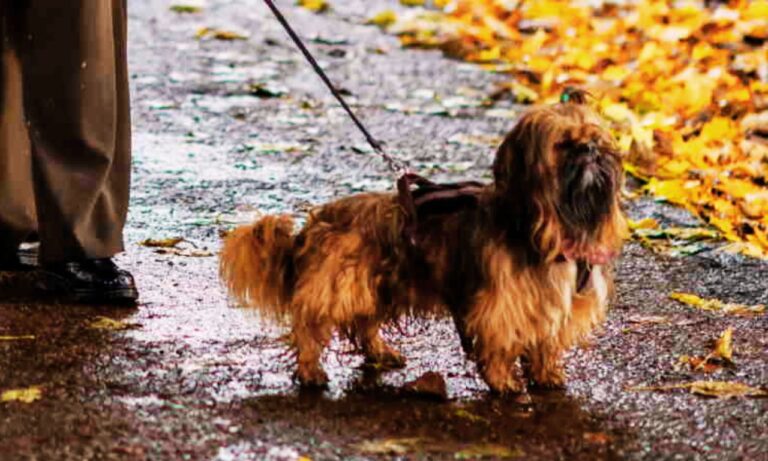| Summary: Many countries have banned specific dog breeds due to perceived aggression or history of attacks. The 15 most illegal dog breeds often include Pit Bulls, Fila Brasileiros, and Japanese Tosas. Laws vary globally, so owning these breeds may result in fines, confiscation, or mandatory restrictions depending on the country. |
The topic of banned dog breeds has stirred significant debate globally, often focusing on public safety concerns, breed-specific legislation (BSL), and the controversy surrounding dog ownership.
While many people love their pets and see dogs as family members, some breeds are deemed dangerous or overly aggressive, leading to their ban or restriction in certain countries and regions.
I will explore the 15 most illegal dog breeds in the world, understand why they are banned, and provide insight into the laws surrounding them. Learn more about the unique double-layered coat of an Anatolian Shepherd and how to care for it effectively.
Blog Highlights
ToggleWhat is Breed-Specific Legislation (BSL)?
Breed-specific legislation refers to laws that regulate or ban certain dog breeds based on the assumption that certain breeds are more dangerous or prone to aggression. These laws are enacted by various governments, municipalities, and regions to address concerns about dog attacks, injuries, and public safety.
However, BSL is controversial. Opponents argue that it unfairly targets specific breeds rather than addressing individual dog behavior, training, and owner responsibility. Supporters of BSL argue that banning specific breeds reduces the risk of attacks by focusing on breeds with certain physical characteristics, such as strength and bite capacity.
Quick Fix Table:
| Dog Breed | Banned In | Reason |
| Pit Bull Terrier | UK, Canada, New Zealand | Aggressive reputation, attack history |
| Japanese Tosa | UK, Australia, Denmark | Bred for fighting |
| Fila Brasileiro | UK, Norway, Malta | Unpredictable temperament |
| Dogo Argentino | UK, Denmark, Norway | Hunting/aggression concerns |
| Presa Canario | Australia, New Zealand | Attack incidents |
| American Bulldog | Denmark, Singapore | Strength and aggression |
| Boerboel | Denmark, Malaysia | Guard dog aggression |
| Kangal | Denmark | Powerful, territorial |
| Wolfdog Hybrids | US (some states), UK, Norway | Wild ancestry |
| Rottweiler | Ecuador, Romania (restricted) | Attack history |
| Doberman Pinscher | Ukraine (insurance required), Malaysia (restricted) | Aggressive behavior |
| Neapolitan Mastiff | Singapore | Large, protective |
| Cane Corso | Some US cities, Germany (restricted) | Strength and guarding instinct |
| Chow Chow | Some US cities | Aggression risk |
| Akita Inu | Singapore, Malaysia (restricted) | Territorial, assertive nature |
15 Most Illegal Dog Breeds in the World Today
While there are numerous breeds that have been banned or restricted around the world, many of these laws are inconsistent, with some countries focusing on specific breeds, while others focus on more general dangerous dog laws that apply to all breeds.
1. Pit Bull Terrier
Pit Bulls are one of the most commonly banned dog breeds in the world. This includes varieties such as the American Pit Bull Terrier, Staffordshire Bull Terrier, and American Bully. Despite being known for their loyalty and affectionate nature when raised responsibly, Pit Bulls have been involved in a significant number of high-profile attacks.

Countries that Ban Pit Bulls:
- United Kingdom: The Dangerous Dogs Act 1991 bans the ownership, sale, and breeding of Pit Bulls.
- Australia: Many Australian states and territories have laws that ban or restrict Pit Bulls.
- Denmark: The breed is banned under Denmark’s breed-specific laws.
Statistics:
- Pit Bull-related incidents: Studies show that Pit Bulls are responsible for over 60% of fatal dog attacks in the U.S. in recent years, making them one of the most controversial breeds worldwide.
For insights on whether Pomeranians should wear a collar, including considerations for safety and alternatives, check out this informative article.
2. Rottweiler
Rottweilers are another breed frequently banned or restricted due to their strength, size, and biting capacity. Originally bred as working dogs for herding livestock, Rottweilers can be aggressive without proper training and socialization.

Countries that Ban Rottweilers:
- New Zealand: Rottweilers are banned under the Dog Control Act 1996.
- Iceland: Rottweilers are prohibited under Icelandic animal welfare laws.
Statistics:
- Rottweiler-related incidents: Rottweilers are responsible for 7.5% of fatal dog attacks in the U.S. between 2005 and 2017, ranking high in dangerous dog statistics.
3. Japanese Tosa
The Japanese Tosa is a rare breed that was originally bred for dog fighting. Due to its aggressive history and fighting instincts, many countries have banned or severely restricted its ownership.

Countries that Ban Japanese Tosa:
- Norway: This breed is banned under the country’s breed-specific legislation.
- Iceland: Also banned as part of Iceland’s regulations on dangerous dogs.
Statistics:
- Fighting history: The Japanese Tosa was specifically bred for dog fighting and is known to engage in aggressive encounters without warning.
4. Dogo Argentino
Originally bred for big-game hunting, the Dogo Argentino is a powerful, muscular breed known for its strength and aggression. While it is a loyal companion in the right environment, the Dogo Argentino is banned in several countries due to its potential danger to other animals and people.

Countries that Ban Dogo Argentino:
- Denmark: The breed is banned under the Dangerous Dog Act.
- Iceland: It is illegal to own or breed a Dogo Argentino in Iceland.
Statistics:
- Incidents: Due to their hunting background, Dogo Argentinos may be prone to aggression toward smaller animals and strangers, making them a high-risk breed in urban areas.
For a comprehensive guide on what kind of harness is best for a Pomeranian, including comfort and safety tips, check out this article.
5. Fila Brasileiro (Brazilian Mastiff)
The Fila Brasileiro, or Brazilian Mastiff, is known for its strong guarding instincts and protective nature. While the breed can be very loyal to its family, it is naturally wary of strangers and can be aggressive if not socialized properly.

Countries that Ban Fila Brasileiro:
- New Zealand: The breed is prohibited under New Zealand’s Dangerous Dogs Act.
- Iceland: The Fila Brasileiro is banned under Icelandic regulations.
Statistics:
- Guard dog history: Fila Brasileiros were originally bred for guarding large estates, and their protective nature can lead to aggressive behavior in untrained individuals.
6. Tosa Inu
The Tosa Inu, often confused with the Japanese Tosa, is a Japanese breed that was also bred for dog fighting. Due to its fighting background and potential for aggression, the breed is banned in several countries.
Countries that Ban Tosa Inu:
- Iceland: Similar to the Japanese Tosa, the Tosa Inu is banned under the country’s animal control laws.
- Denmark: Also banned under breed-specific regulations.
Statistics:
- Aggressive tendencies: The Tosa Inu’s history of fighting means it has an ingrained tendency to be territorial and aggressive, especially toward other dogs.
7. Pit Bull Mastiff (American Mastiff)
The Pit Bull Mastiff is a hybrid breed known for its sheer size and strength. This mix of Mastiff and Pit Bull traits can make it a dangerous breed if not properly trained or socialized.
Countries that Ban Pit Bull Mastiffs:
- Australia: Many Australian states have restrictions or bans on owning hybrid breeds like the Pit Bull Mastiff.
- United Kingdom: It is banned under the Dangerous Dogs Act.
Statistics:
- Hybrid aggression: The combination of the protective nature of the Mastiff and the aggression tendencies of the Pit Bull can make this breed unpredictable in certain environments.
8. Mastiff Breeds (Including English and Bull Mastiffs)
Mastiffs are giant dogs, and while they are often calm and gentle, their size and strength can make them dangerous if provoked or poorly trained. Many countries have restrictions or bans on certain Mastiff breeds.
Countries that Ban Mastiffs:
- Denmark: Certain Mastiff breeds are banned under Danish laws.
- Norway: Mastiffs are regulated under the country’s dangerous dog laws.
Statistics:
- Size and strength: Mastiffs can weigh over 200 pounds, and their bite strength is immense, making them a risk if they become aggressive.
9. American Bulldog
American Bulldogs, known for their muscular build and high energy, are often banned in places with breed-specific laws due to their strong protective instincts and potential for aggression.
Countries that Ban American Bulldogs:
- New Zealand: This breed is banned under New Zealand’s Dangerous Dog Act.
- Canada: Some provinces and municipalities in Canada have restrictions on American Bulldogs.
Statistics:
- Bulldog incidents: American Bulldogs are involved in a significant number of dog bite incidents, with their powerful jaws being a particular concern.
10. Akita Inu
The Akita Inu, a powerful and independent breed, is known for its loyalty and protective nature. However, its territorial instincts can lead to aggressive behavior if not managed properly, especially toward strangers or other animals.
Countries that Ban Akitas:
- Iceland: The Akita Inu is banned under Icelandic dog laws.
- Denmark: It is prohibited in certain areas due to its aggressive tendencies.
Statistics:
- Territorial behavior: Akitas are naturally territorial and may become aggressive toward other dogs or people if not properly socialized from a young age.
Discover if the American Eskimo is a guard dog and learn about its suitability for protecting your home.
11. Alaskan Malamute
Alaskan Malamutes are strong, large dogs originally bred for pulling heavy sleds. While they are friendly, their strength and independent nature can lead to dangerous behavior if not trained correctly.
Countries that Ban Alaskan Malamutes:
- Denmark: Alaskan Malamutes are restricted under breed-specific legislation.
- Canada: In some areas, ownership of Malamutes is restricted due to their size and strength.
Statistics:
- Strength and size: Alaskan Malamutes can weigh up to 100 pounds, and their size combined with an independent nature can make them difficult to control if not trained correctly.
12. Bull Terrier
Bull Terriers are known for their muscular build and stubborn nature. While they are affectionate with family, their aggressive behavior, especially toward other animals, has led to their ban in certain areas.
Countries that Ban Bull Terriers:
- Australia: Certain Australian states ban Bull Terriers due to their aggressive tendencies.
- Norway: This breed is banned under Norway’s breed-specific legislation.
Statistics:
- Aggression toward animals: Bull Terriers are known for their tendency to show aggression toward other animals, which is why they are often banned in certain regions.
13. Doberman Pinscher
Doberman Pinschers are intelligent, strong, and loyal dogs that are often used for guarding purposes. However, their protective nature can sometimes lead to aggression if not properly managed.
Countries that Ban Doberman Pinschers:
- Iceland: Dobermans are banned under the country’s animal laws.
- New Zealand: Doberman Pinschers are regulated under dangerous dog laws in some parts of the country.
Statistics:
- Guarding instincts: Dobermans can be highly protective of their owners, and their natural guarding instincts can turn aggressive if not well trained.
14. Chihuahua (in Some Regions)
Chihuahuas, though small, can be aggressive, especially when they feel threatened. Despite their size, they are often involved in biting incidents, and some countries and cities have banned them due to their aggressive tendencies.
Countries that Ban Chihuahuas:
- Ireland: In certain regions of Ireland, Chihuahuas have been banned due to reports of aggression.
Statistics:
- Small dog aggression: Despite their tiny size, Chihuahuas are known for aggressive behaviors like biting, which has led to bans in some regions.
15. Dogo Canario
The Dogo Canario, a powerful guard dog, is known for its protective instincts and territorial behavior. While they are often loyal to their families, their aggressive tendencies make them a high-risk breed.
Countries that Ban Dogo Canario:
- Denmark: The Dogo Canario is banned in Denmark under breed-specific legislation.
Statistics:
- Guard dog behavior: The Dogo Canario was originally bred as a livestock guardian, and its protective behavior can lead to aggression if not trained properly.
Wrapping Up
Breed-specific legislation remains a controversial approach to managing dog-related incidents. While some argue that banning dangerous breeds is essential for public safety, others believe that a dog’s behavior is more about upbringing and training than its genetic predisposition.
Nevertheless, these 15 most illegal dog breeds in the world are among the most banned across the globe, with many facing restrictions due to their size, strength, or history of aggression. Responsible dog ownership, proper training, and socialization are key factors in reducing the risk of incidents, regardless of breed. Learn about the size collar for an American Eskimo to ensure a perfect fit and comfort for your dog.





